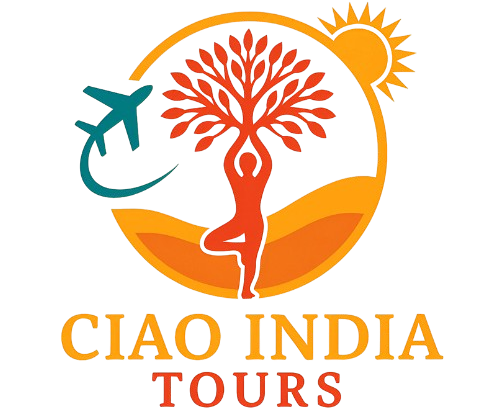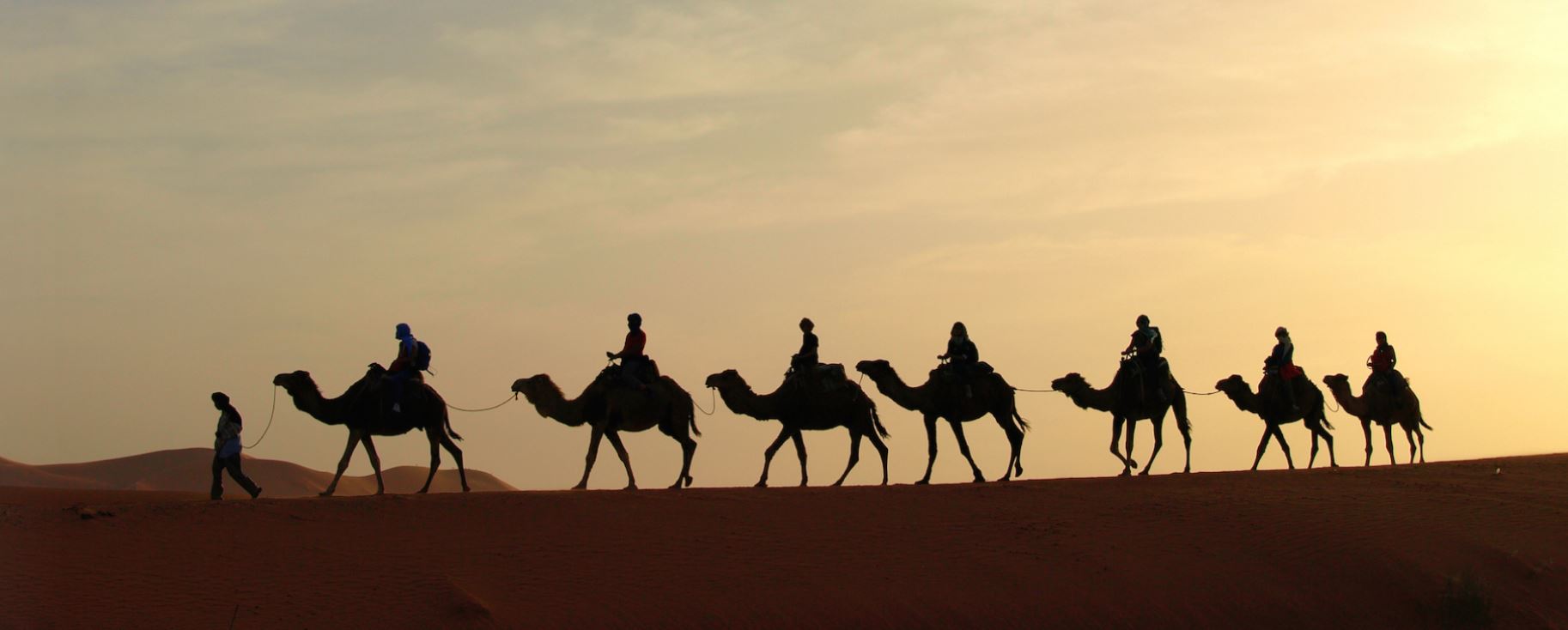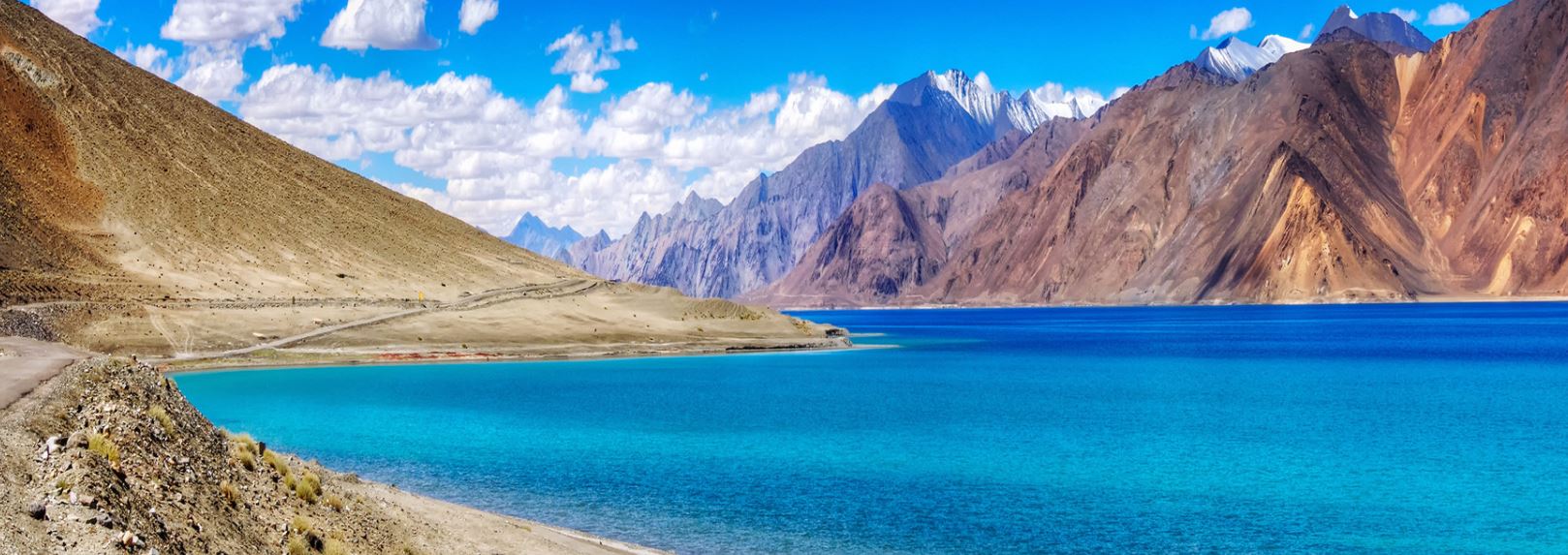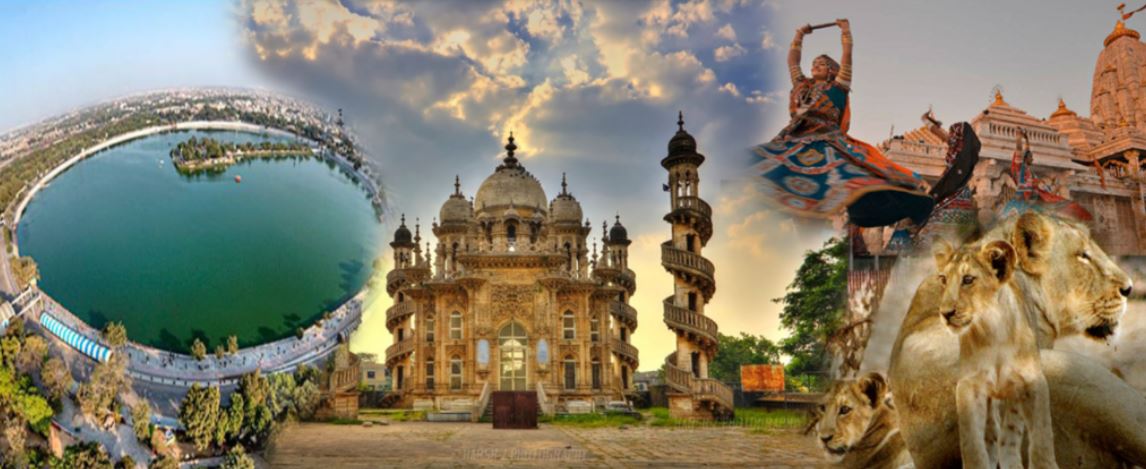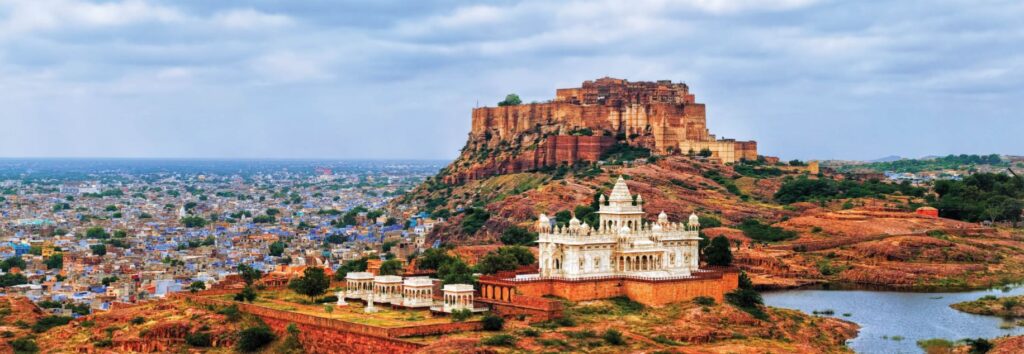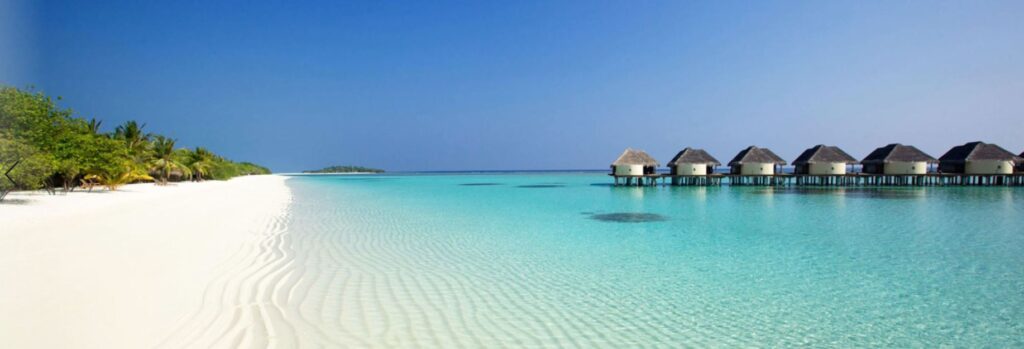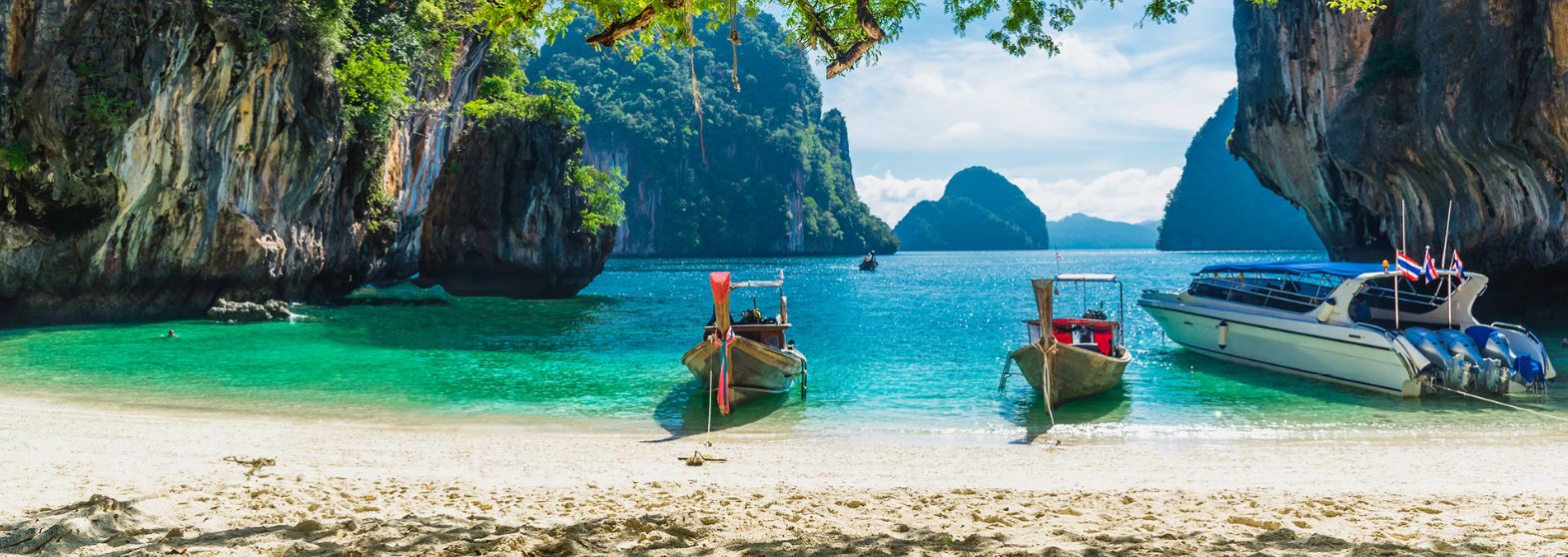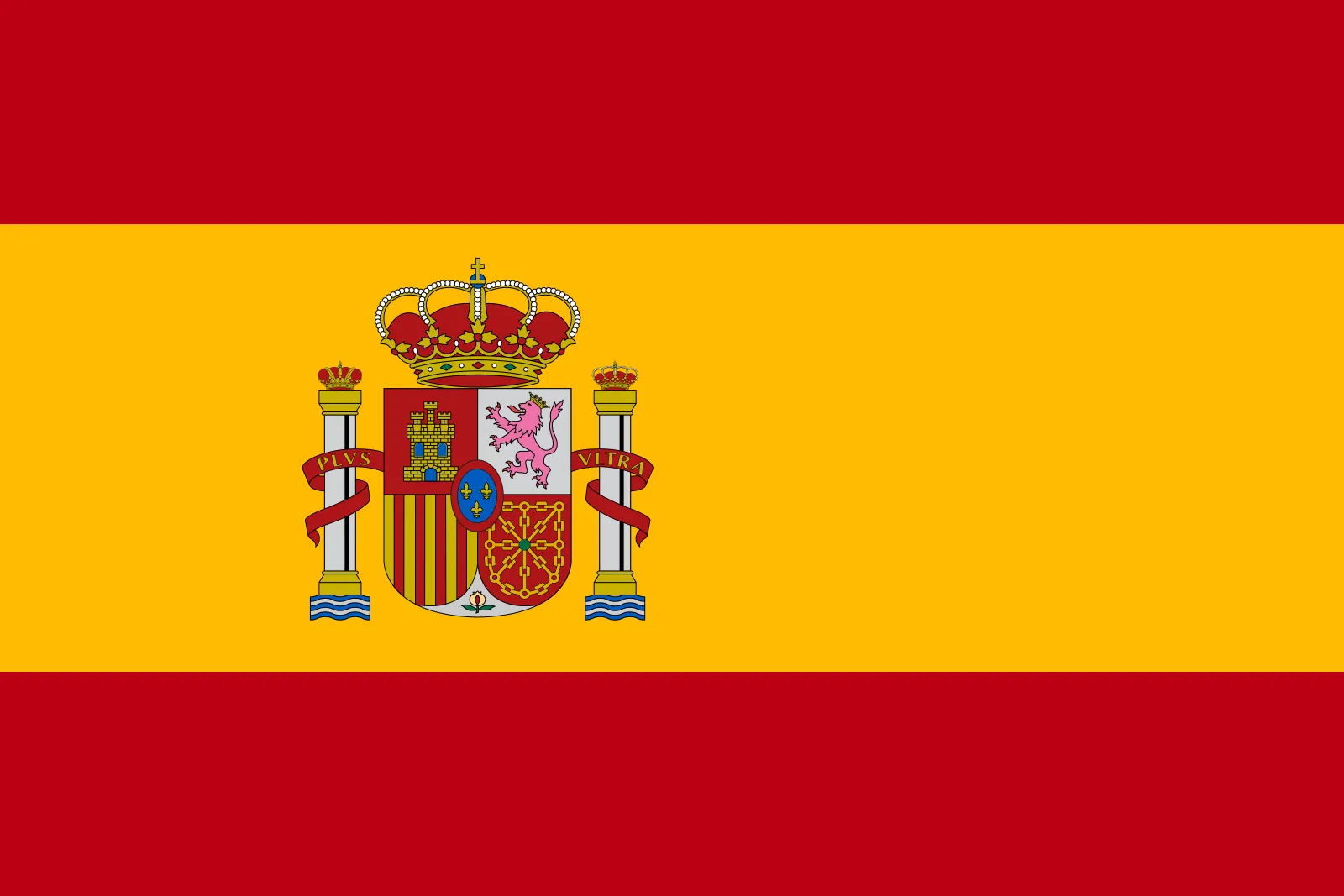All our tours are 100% customizable
Grand tour of South India – 21 nights/22 days
Price to be reconfirmed – 1450 Euro/pp minimum -02 persons
Bangaluru-Hampi-Hassan-Mysore-Ooty-Coimabatore-Trichy-Kumbakonam-Mahabalipuram-Chidambaram-Tanjore-Pudukottai-Chettinadu-Madurai-Munnar-Thekkady-Kochi-Alleppey-Kumarakom-Trivendrum
Day 1 - Arrival in Bengaluru
Arrival at Bangalore International Airport.
Once immigration procedures are completed and luggage collected, our operator will be waiting for you outside the Terminal
Arrival at the hotel and check-in. Standard Check-in at 14:00 / Check out at 12:00.
Visit Bangalore Palace: This property was purchased by Rev. Garrett in 1873 AD from the British guardians of Maharaja Chamarajendra Wadiyar X, it was later transformed and renovated in 1881 as the residence of the young Maharaja.
ISKCON Temple: The construction of this majestic temple began in 1990. Six hundred skilled craftsmen spent more than 10 million man-hours to build this architectural marvel. The construction of the temple was subsequently completed in 1997.
Cubbon Park: Established in the year 1870, Sri Chamarajendra Park is a 'lung' area of Bengaluru city, located in the heart of the city in the central administrative area.
Visvesvaraya Industrial and Technological Museum: This museum exhibiting numerous scientific experiments and engines, was established in the memory of Bharat Ratna Sir M Visvesvaraya. It was inaugurated by India's first Prime Minister, Pandit Jawaharlal Nehru, in 1962.
Nandi Temple: The Hindu temple is located inside a park called Bugle Rock. The bull referred to is a sacred Hindu demigod, known as Nandi; Nandi is a staunch devotee and assistant of Shiva.
Tipu's Summer Palace: A fine example of Indo-Islamic architecture was the summer residence of the mysterious ruler Tipu Sultan, the construction was started by Hyder Ali and completed in the year 1791.
Lalbagh Garden: Lal Bagh Botanical Garden is located in the southern part of Bangalore; it has a famous glass house dating back to 1889 that hosts two annual flower shows.
Overnight stay in Bangaluru.

Day 2 - Bangalore-Hampi (342 Km, 6 Hours)
After breakfast, drive to Hampi.
On arrival at Hampi transfer to hotel.
Then Visit Virupaksha Temple: - Virupaksha Temple is located in Hampi, Vijayanagara district, Karnataka, India. It is part of the Hampi Group of Monuments, designated as a UNESCO World Heritage Site. The temple is dedicated to Lord Virupaksha, a form of Shiva. The temple was built by Lakkan Dandesha, a nayaka under the ruler Deva Raya II also known as Prauda Deva Raya of the Vijayanagar Empire.
Shree Vijaya Vitthala Gudi:- This temple is famous for Stone Chariot and Musical Pillars. Vijaya Vittala or Vittala Temple is the most famous and popular tourist attraction in Hampi. It was built around 15th century AD during the reign of King Devaraya II (1422 - 1446 AD). This temple is dedicated to Lord Vishnu in the form of Vittala.
Visit local market of Hampi
Overnight stay in Hampi.
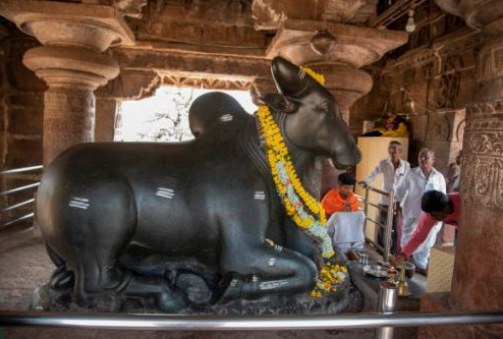
Day 3 - Hampi
After breakfast the day begins.
Hazara Raama Temple: - It was built in the early 15th century by the Vijayanagara king, Devaraya II, and was constructed as a simple structure. It consisted of only a shrine, a pillared hall and an Ardha mandapa. However, it was later renovated to an open portico and beautiful pillars.
Lakshmi Narasimha Temple: - Lakshmi Narasimha Temple was built in 1246 AD by Bommanna Dandanayaka, a commander of the Hoysala Empire during the reign of King Vira Someshwara. It is a good example of 13th century Hoysala architecture.
Elephant Stables: - The elephant stables of Hampi served as an enclosure for the royal elephants during the times of the Vijayanagra Empire. Here, one sees eleven domed chambers in a long row with one particularly ornate one that served as an enclosure for the musicians during performances.
Queen's Bathhouse: - Located 1 km from Kamalapur bus stand and 3 km from Hampi bus stand, Queen's Bath is located near the entrance to the Royal Enclosure in Hampi. The Queen's Bath is believed to have been built by Achyuta Raya for the women of the Vijayanagara royal family.
Lotus Mahal: - Lotus Mahalor Chitrangini Mahal is an important secular structure in Hampi, India. The Lotus Mahal is an example of Vijayanagara style architecture and is a two-storied structure built of rubble masonry and finely plastered. The structure was used as a residual place for the royal family of the Vijayanagara Empire.
Achyutaraya Temple: - Dedicated to Lord Thiruvengalanatha or Venkateshwara, this glorious temple in Hampi was built by the Vijaynagara ruler Achyuta Deva Raya. Due to its architectural finesse, this temple is one of the most popular tourist places to visit in Hampi. The Achyutaraya temple has two enclosures marked by Gopuras.
Overnight stay in Hampi.
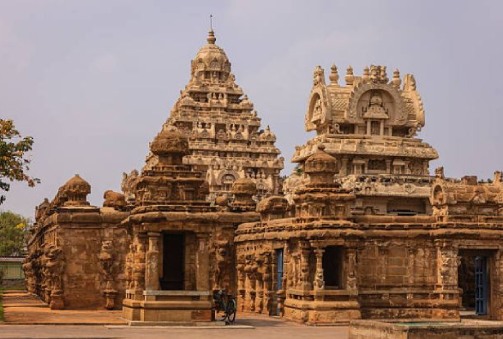
Day 4 - Hampi-Hassan (321 Km, 7 Hours)
After breakfast, departure for Hassan.
Sri Doddagaddavalli Lakshmi Devi Temple.:- The Lakshmi Devi Temple is an early 12th-century Hindu temple complex located in the village of Doddagaddavalli in Hassan district of Karnataka, India. The main temple consists of four shrines sharing a common mandapa, each shrine is square and aligned to a cardinal direction. The eastern shrine has the goddess Lakshmi, the northern shrine is dedicated to Kali-Durga, the western shrine to Shiva, and the southern shrine is empty and probably Vishnu.
Yogakshema Ayurveda Centre:- Situated in the quaint and ancient town of Hassan, Yogakshema Ayurveda Centre is a holistic healing facility that aims to practice the ancient science of Ayurveda to restore and rejuvenate the body, mind and soul. Yogakshema Ayurveda Centre has evolved through the inspired vision of Dr. Veerendra Heggade, a visionary and philanthropist who has transformed the educational and medical landscape for over 45 years.
Hasanamba Temple:- Hasanamba Temple is a Hindu temple located in Hassan, Karnataka, dedicated to Goddess Shakti or Amba. The temple was built in the 12th century and tourists can visit it only once a year during the Hindu festival Deepavali in October. Devotees visit the temple to seek the blessings of the Goddess during this week
Overnight in Hassan.

Day 5 - Hassan-Mysore (123 Km, 2 hours 50 minutes)
After breakfast, depart for Mysore.
Mysore Palace: - Mysore Palace, also known as Amba Vilas Palace, is a historic palace and royal residence. It is located in Mysore, Karnataka. It was the official residence of the Wadiyar dynasty and the seat of the Kingdom of Mysore. The palace is located in the center of Mysore and faces the Chamundi Hills to the east. Mysore is commonly described as the "City of Palaces" and there are seven palaces including this one. However, Mysore Palace refers specifically to the one inside the new fort.
St. Philomena's Cathedral: - St. Philomena's Cathedral is a Catholic church that is the cathedral of the Diocese of Mysore, India. Its full name is St. Joseph and St. Philomena Cathedral. It is also known as St. Joseph's Cathedral. It was built in 1936 using a neo-Gothic style and its architecture was inspired by the Cologne Cathedral in Germany. This is one of the tallest churches in Asia.
Venugopala Swamy Temple: - Venugopala Swamy Templelocated at Hosa Kannambadi, near Krishna Raja Sagara, is an example of Hoysala architecture in Karnataka, India. This temple was built in the 12th century AD around the same time as the Chennakesava temple at Somanathapura in Mysore district.
Chennakesava Temple: - Chennakesava Temple, also known as Chennakeshava Temple and Keshava Temple, is a Vaishnava Hindu temple on the banks of the Kaveri River in Somanathapura, Karnataka, India. The temple was consecrated in 1258 AD by Somanatha Dandanayaka, a general of the Hoysala king Narasimha III. It is located 38 kilometers east of the city of Mysuru. The ornate temple is a model illustration of Hoysala architecture.
Overnight stay in Mysore.
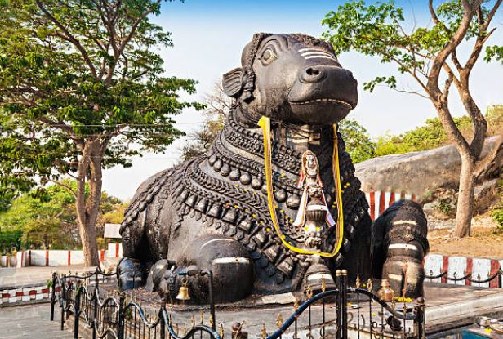
Day 6 - Mysore
After breakfast the day begins.
Sri Srikanteshwara Swamy Temple: - Nanjundeshwara Temple is an ancient temple dedicated to Lord Shiva in the Hindu pilgrimage town of Nanjanagudu in Karnataka, India. It is located on the right bank of the Kapila River, a tributary of the Kaveri. Nanjangudu is also known as "Dakshina Prayaga" or "Prayag of the South".
Sri Chamarajendra Zoological Gardens: - Mysore Zoo is a 157-acre zoo located near the Mysore Palace in India. It is one of the oldest and most famous zoos in India and houses a wide range of species. Mysore Zoo is one of the most popular attractions in the city..
The Lalitha Mahal: - Now renamed Lalitha Mahal Palace Hotel, is a luxury hotel turned royal residence and the second largest palace in the South Indian city of Mysore, Karnataka, after the Mysore Palace. It is located near the Chamundi Hills, east of the city.
Chennakeshava Temple, Somanathapur:- The Chennakesava Temple, also known as Chennakeshava Temple and Keshava Temple, is a Vaishnava Hindu temple on the banks of the Kaveri River in Somanathapura, Karnataka, India.
Karanji Lake: - Karanji Lake was built by the King of Mysore about 100 years ago, as a percolation tank. This lake was used by the residents for bathing, washing, drinking etc. Mysore Zoo took over the lake in 1976. The water spread area of 90 acres has an area of 2.5 km.
Overnight stay in Mysore.
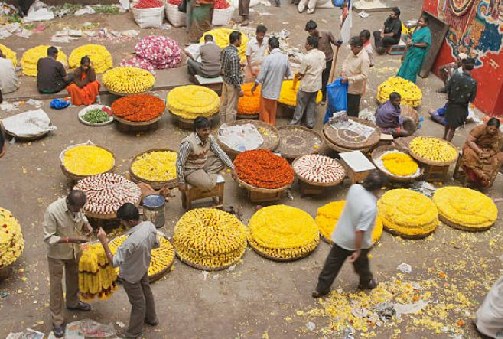
Day 7 - Mysore-Ooty (126 Km, 3 Hours 20 Minutes)
After breakfast, drive to Ooty.
Rose Garden: - The Government Rose Garden is located on the slopes of Elk Hill in Vijayanagaram of Ooty city in Tamil Nadu, India at an altitude of 2200 meters.
Ooty Lake: - An artificial lake, built in 1825 by John Sullivan, Ooty Lake is one of the most popular tourist attractions. Its scenic beauty fascinates everyone. Walking around the lake on a well-marked path and boating are also very popular here.
Doddabetta Peak: - It is the highest point of the Nilgiris Hills with an elevation of around 2,623 meters. It is also the second highest peak in South India. A junction of Western and Eastern Ghats, its breathtaking view of the surrounding landscape is something not to be missed.
Ooty Tribal Research Centre: - Located about 10 kilometers from Ooty, it conducts research on the tribals inhabiting South India and the Andaman and Nicobar Islands. It also houses a guest house and a library.
Overnight stay in Ooty.
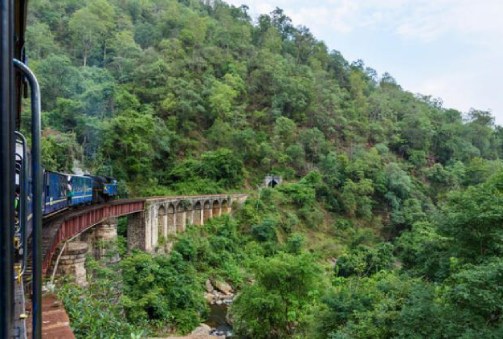
Day 8 - Ooty
After breakfast the day begins.
Coonoor - Located about 20 km from Ooty Coonoor is one of the largest hill stations after Ooty. In the Nilgiri Hills, at an altitude of 1,850 m above sea level, this hill station has an enticing list of tourist attractions and adventure sports like trekking.
Sim's Park: - Situated at a height of 1780 meters, Sim's Park is a botanical garden established in 1874. It has more than 1000 species of flora including Queensland Karry Pine, Rudraksha (bead tree) and ornamental tree which make it a noteworthy place to visit.
Lamb's Rock: - Situated on the way to Dolphin's Nose in Ooty, Lamb's Rock is called Echo Rock. A popular picnic spot, it offers a commanding view of the Coimbatore plains and the surrounding lush greenery. The route to this place also offers trekking opportunities.
Dolphin's Nose: - Located 10 km from Coonoor, Dolphin's Nose is a peak that offers a mesmerizing view of the Nilgiri Hills and Catherine Falls. The top of the hills resembles the nose of a dolphin hence the name.
Tea Garden: - Coonoor, known as the city of tea gardens, boasts of many breathtaking tea gardens. A tour of these tea gardens, walking through the lush greenery and refreshing aromas of tea is an experience worth a try.
Overnight stay in Ooty.
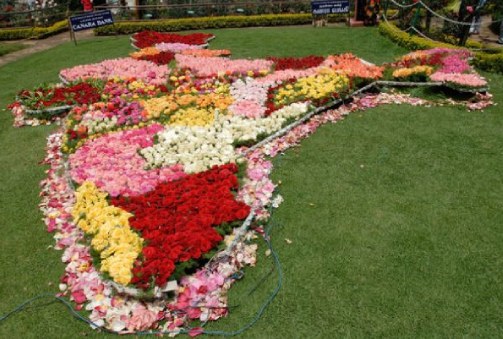
Day 9 - Ooty-Coimbatore
After breakfast, drive to Coimbatore.
Deer Park: - It is located about 1 km from Ooty Lake. Along with deer like Sambhar and Chithal, this park is home to a variety of flora and fauna, especially avian fauna.
Avalanche Lake: - Situated at a distance of 28 kilometers from Ooty, surrounded by lush greenery, this lake presents a breathtaking scenic beauty. As the name suggests, this lake is a result of an avalanche. Trout fishing is also very popular here.
Italian Garden: - This garden was laid out in 1897 by the Marquis of Tweedale and is spread over 55 acres. Lush and well-kept lawns, rare tree species (like the cork tree which is probably the only such tree in India, the paper bark tree and the monkey puzzle tree - monkeys cannot climb this tree),
Along the way you visit Adiyogi Shiva Statue.
Adiyogi Shiva Statue: - The famous Adiyogi Shiva statue in Coimbatore is among the best places to visit in Coimbatore. The statue stands at a height of 112 feet, making it the tallest bust statue in the world. Situated amidst the lush green foothills of the Velliangiri mountains, the statue is also surrounded by lush green farms.
Overnight stay in Coimbatore.
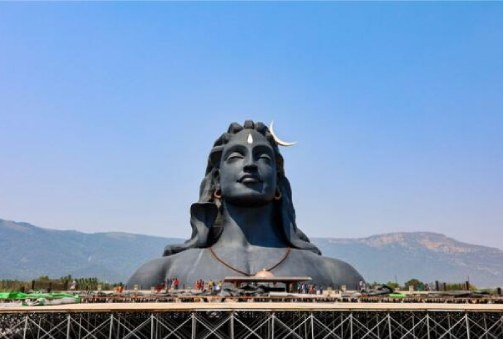
Day 10 - Coimbatore-Trichy (217 Km, 4 Hours 20 Mins)
After breakfast, drive to Trichy.
Marudhamalai Hill Temple: - is located a little away from the main city. Situated on the Western Ghats, the temple is located at an impressive altitude of 500 feet. Surrounded by greenery and serenity, the temple is ideal for day trips from Coimbatore. The temple is definitely among the best places to visit near Coimbatore.
GEDEE Car Museum: - Sri GD Naidu, a prominent industrialist and philanthropist from Coimbatore, South India, had a great passion for automobiles. He visited several countries during his life and was fascinated by the workmanship and engineering capabilities of Germany and other pioneering nations.
Departure for Trichy.
On arrival visit Rock Fort Temple :- Trichy Among the many spectacular sites to visit in Trichi, the Rock Fort Temple is a must visit. The fort is a massive rock structure built at an altitude of 83 m above sea level. Situated on the banks of the Cauvery River, it is the most famous landmark of Trichi. Halfway up the fort is the Thayumanaswamy Temple, also known as the Rock Fort Temple.
Overnight stay in Trichy.
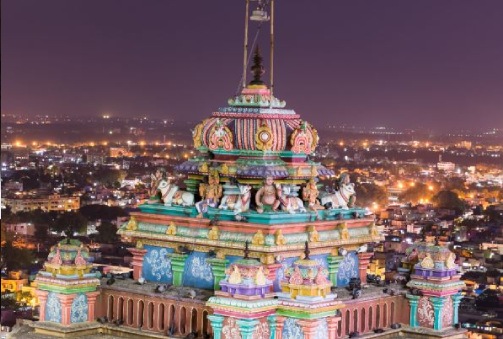
Day 11 Trichy-Darasuram-Kumbakkonam (99 Km, 2 Hours 30 Minutes)
After breakfast, drive to Kumbakkonam.
Along the way visit Darasuram temple.
Airavatesvara Temple:- Airavatesvara Temple at Darasuram is a divine historical temple filled with rich heritage and astonishing artistic splendors. One of the three ancient temples that are collectively called the “Great Living Chola Temples”, Airavatesvara Temple at Darasuram is awarded the UNESCO Heritage tag.
Upon arrival at Kumbakkonam you will visit.
Visit Indeco Heritage Museum - Indeco believes that any object from the past, even a fragment of it, can help provide a deeper and broader understanding of our heritage and way of life, thus creating links with our forgotten history.
Bronze Factory. - It is indeed a specialized artistic tradition that is unique to the city, hence the bronze idol makers here are known as the "Swamimalai Bronze Icons".
Mahamaham Temple - This is one of the many temples dedicated to Lord Shiva in Kumbakonam. The Goddess is Visalatchi. It has shrines connected to Nine Rivers and visiting this temple is considered auspicious for girls. ,
Overnight stay at Kumbakkonam.
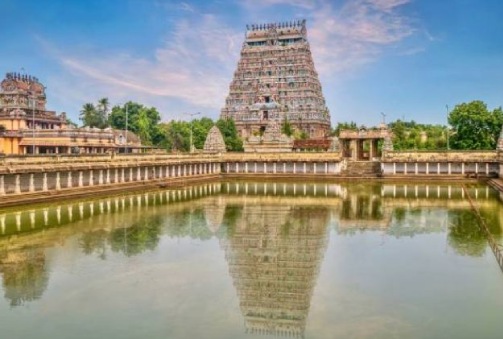
Day 12 - Kumbakkonam-Mahabalipuram (250 Km, 5 Hours 10 Minutes)
After breakfast, drive to Mahabalipuram.
On arrival at Mahabalipuram visit The Shore Temple: - This is one of the oldest temples in South India and belongs to the second half of the 7th century AD, built with granite blocks. Since it is located on the coast overlooking the Bay of Bengal, it is called Shore Temples.
The Descent of the Ganges - The monolith stands proudly fifteen feet high and one hundred feet long, one of the largest and finest of its kind in the world, and is smothered in lifelike carvings of humans, elephants, deities and mythical monsters, intertwined and marching in ranks across every inch.
Five Rathas - Situated at the southern end of Mahabalipuram, the Five Rathas are five independent temples. There are about nine monolithic temples in Mahabalipuram. They are the unique contribution of the Pallavas to Indian art. The monolithic temples are locally called Ratha (Chariot) as they resemble the processional chariots of a temple.
Arujuna Penance - It is the largest in the world measuring 27 x 9 m. It has over 100 sculptures of deities, birds and beasts and saints. It is popularly called as "Arjunan Penance" as this bas-relief is believed to illustrate an instance from the Mahabharata where Arjuna, one of the Pandavas, performed a rigorous penance with a prayer to Lord Shiva to obtain the Powerful and Divine Bow.
Overnight stay at Mahabalipuram.

Day 13 - Mahabalipuram-Pondicherry (100 km / 2 hours)
After breakfast, Departure for Pondicherry
Upon arrival you will visit Sri Aurobindo Ashram - Sri Aurobindo Ashram is a kind of place where you can seek spirituality in a relaxed atmosphere and achieve inner peace by meditating in its serene aura. The magical ambience of this sanctuary makes you forget everything as soon as you enter the ashram and the beautiful scenery will leave you speechless, thus making the overall setting even more spectacular.
Auroville - a city dedicated to human unity, tracing its history back to the 20th century, the concept of Auroville Township was developed in June 1965 by Mirra Alfassa, popularly known to her followers as The Mother. She wanted to build a city where people from all over the world, irrespective of their nationality, caste, religion and social status, could live peacefully under one roof.
Pondicherry Beach :- Pondicherry beaches are the most breathtaking feature of the coastal city of Pondicherry for all the tourists. With its pristine shoreline and a heap of natural beauty filled with sparkling waters and golden sands, some of the best beaches in Pondicherry attract hordes of tourists.
Visit the local market by rickshaw - This is an exploration of the Tamil quarter of Pondicherry, on foot and by cycle rickshaw. We will see the traditional houses, places of worship and the lively local markets of the district.
Overnight stay in Pondiccherry.

Day 14 - Pondicherry-Chidambaram-Tanjore (193 Km, 4 Hours 30 Mintues)
After breakfast, drive to Tanjore.
En route visit Chidambaram nataraja temple - This temple dedicated to Lord Shiva called Nataraja is one of the Five Sabhas [divine stages] where Lord Shiva performed the Cosmic Dance. Chidambaram is a Pancha Bootha Sthalam, which represents Akasam (Heaven), one of the five elements of nature.
On arrival at Tanjore, After lunch transfer to hotel for some relaxation
Visit Tanjore - En route visit the city of tanjore. Thanjavur is a city in the southern Indian state of Tamil Nadu. Its many temples include the 11th-century Brihadeeswarar Temple, a vast Chola-era complex with frescoed interiors.
The Thanjavur Maratha Palace houses the centuries-old Saraswathi Mahal Library, with palm-leaf manuscripts, and the Thanjavur Art Gallery, with bronze statues.
The Tamil University Museum displays coins, folk artefacts and musical instruments. Visit the Brihadeeshwara Temple, Thanjavur Royal Palace and Art Gallery.
Brihadeeswarar Temple - It is one of the largest temples in India and is an example of Dravidian architecture during the Chola period. Built by Emperor Raja Raja Chola I and completed in 1010 AD, the temple completed 1000 years in 2010. The temple is a part of the UNESCO World Heritage Site known as the "Great Living Chola Temples", the other two being Brihadeeswarar Temple, Gangaikonda Cholapuram and Airavatesvara Temple.
Overnight stay at Tanjore.

Day 15 - Tanjore-Pudukottai-Chettinad (96 Km, 1 Hour 45 Mins)
After breakfast, drive to Chettinad.
Along the way you will see a wonderful city Pudukottai.
Brahadambal Temple: - Pudukkottai district is home to many ancient monuments, many of which are temples of incredible beauty. Brahadambal temple is one such gem and is located in Thirukokarnam, a small town about 5 km from Pudukkottai city in Tamil Nadu.
Kudimiyanmalai:- It is located at a distance of 20 kms from pudukkottai. The cave temples located here are the testimony of ancient art and culture. There is a Siva temple on a hill sluice dedicated to Sikkanatheeswarer and the life-size sculpture was surrounded by this temple.
Chettinad Palace: - The Chettinad Palace, located in the Sivaganga region of Tamil Nadu, is a splendid illustration of the traditional building of the Chettinad people. Its magnificent construction dates back to the 18th century.
Chettinadu Mansion: - The Chettinadu Mansion in Kanadukathan is a heritage retreat. This palace has existed for over a century and has been used as a resort ever since it opened its doors to the public.
Vairavanpatti:- The temple dates back to the 19th century and is associated with many legends. Sivapurandevi and Lord Aatkondanathar are worshipped here, although other deities may also be present. The Ramayana and Mahabharata are well represented in the temple’s collection of paintings.
Soorakudi: - A route leading to Chettinad and Kanadukathaan railway station passes through the Soorakudi temple, which is located on the outskirts of the city about ten kilometers from Karaikudi. The beautiful temple is inspired by the Soorai shrubs, a species grown here for its therapeutic properties
Upon arrival, transfer to the hotel.
Overnight stay at Chettinad.
Overnight in Madurai.
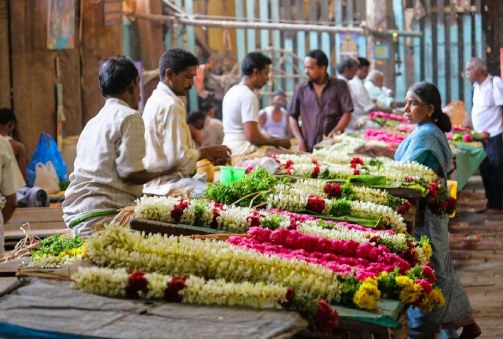
Day 16 - Chettinad-Madurai ( 95 Km, 2 Hours )
After breakfast, drive to Madurai.
The Gandhi Museum is located in the old palace of Rani Mangammal. The museum revives the freedom struggle. The Gandhian movement is well represented as an art gallery. Madurai was chosen for this museum because Gandhiji took important decisions during his visits to Madurai. In 1921 he decided to give up his rich dress code when he was visiting Madurai.
Then check in to the hotel and time to rest
In the evening visit the temple followed by evening ceremony at 9:00 PM.
Meenakshi temple - Arulmigu Meenakshi Amman Temple, also known as Meenakshi Sundareshwarar Temple, is a historic Hindu temple located on the southern bank of the Vaigai River. It is dedicated to the goddess Meenakshi, a form of Parvati, and her consort, Sundareshwarar, a form of Shiva.
Evening Ceremony - In the late evening, you will witness the amazing pooja (prayer) ceremony at the Meenakshi temple. During the ceremony, the idols of Sundareshwar (an avatar of Lord Shiva) and his consort Meenakshi (an avatar of Parvati) are taken in a grand procession to the bedchamber, where they are kept for the night.
Note: To visit Meenakshi temple, you must follow the dress code which includes shirts/tops and shorts with short sleeves or full sleeves. Sleeveless dresses, shorts or shorts are not allowed. Non-Hindus are not allowed to enter the sanctum sanctorum.
Overnight stay in Madurai.
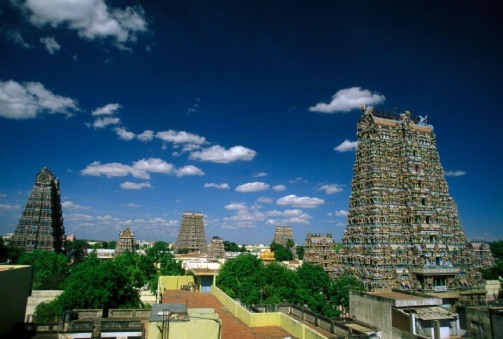
Day 17 - Madurai-Munnar (160 Km, 4 hours 30 minutes)
After breakfast, leave for Munnar
Pothamedu Viewpoint : - Experience the beautiful views of Munnar! Take a trip to Pothamedu, a hilltop site where you can enjoy beautiful views of the surrounding mist-shrouded hills and green valleys caressed by cool winds.
Pallivasal Falls, Pallivasal Falls in Munnar is a secluded yet scenic tourist spot. These falls are formed by the Muthirappuzhayar River and are among the popular waterfalls in the area. Visit the place during monsoons and the sight of water flowing down the rocks will enliven your senses.
Blossom park - It is a park located in one of the most beautiful places in the country. Many activities are offered here including boating, skating, cycling, etc. And if you want a quiet visit, admire the trees and a wide variety of beautiful flowers in the park.
Overnight stay in Munnar.
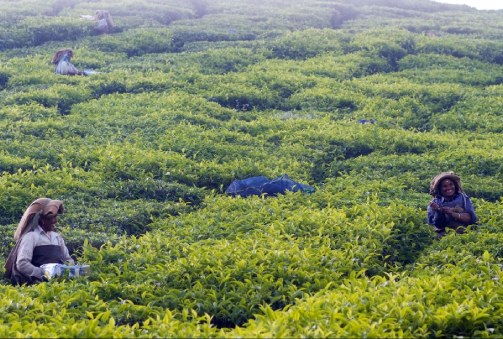
Day 18 - Munnar
After breakfast the day begins.
Tea Museum (Closed on Monday) - Tea has played a vital role in the history of Munnar. Tea plantations have played a huge role in attracting people to the area. Tata Tea established a Tea Museum in 2005 which has photographs and machinery that chronicle the journey of tea in the area.
Echo Point - About 15 km from Munnar is the famous Echo Point. Popular for its natural echo phenomenon, one can always see the area filled with eager visitors throughout the year. At an altitude of about 600 feet, people love to take a walk in the lush greenery surrounding the place. It is an ideal picnic spot.
Mattupetty is among the most visited destinations in the tourist hotbed of Munnar. It is a beautiful picnic spot that regularly attracts visitors. People love to visit the dam and lake here and families can be regularly seen enjoying a nice afternoon in the area.
Photo Point - While most of Munnar is photogenic, Photo Point is doubly so. Just 3 km from the main market of this hill station, this site is a photographer's favourite. Surrounded by the Tata Tea Gardens of Kanan Devan Hills and a series of silver oaks, this spot is located right off the main highway.
Kundala Dam - About 20 km from Munnar, Kundala Dam is a picturesque tourist spot. The dam is built on the Periyar River and is surrounded by the green mountain range of Western Ghats. The area also has cherry trees, which bloom twice a year, adding to the beauty of the place.
The Rose Garden in Munnar is a dreamland for rose lovers. This garden contains roses of almost every color. The Rose Garden is home to not only roses but also hundreds of rare varieties of other flowers and herbal plants.
Kathakali Performance- Kathakali is one of the major forms of Indian classical dance. It is a "story play" art form, but distinguished by the richly colored makeup, costumes, and masks worn by the traditionally male actor-dancers.
Kalaripayattu Performance - Considered one of the oldest and most scientific martial arts in the world, Kalaripayattu was developed in Kerala. Lauded as the pride of Kerala, the training begins with an oil massage of the entire body until it becomes supple and flexible. Feats such as chattom (jumping), ottam (running) and marichil (somersault) are also integral parts of the art form.
Overnight stay in Munnar.
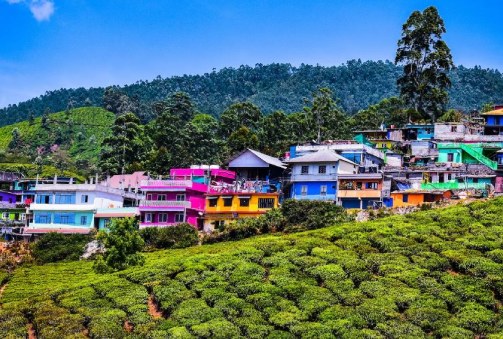
Day 19 - Munnar-Thekkady ( 91 Km, 2 hours 53 minutes )
After breakfast, Drive to Thekkady
On arrival visit to spice plantation - Spice and spice plantations are something unique to Thekkady, Kerala and most of them do not miss this interesting activity. Spices like cardamom require a very moderate cool climate which only Thekkady offers and that is why Thekkady and surrounding places are full of cardamom plantations.
Elephant Junction - Thekkady, located near Kumily, is an excellent place to learn about elephants, go for elephant rides, take baths and showers with them. It is a fun and entertaining activity for kids and adults.
Boat Ride at Periyar National Park & Wildlife Sanctuary has ensured that it is widely known as Periyar Lake. Governed by the Kerala Forest and Wildlife Department, the lake sees hundreds of thousands of foot traffic every year. Periyar Lake is located within a protected area and helps in the conservation of plants, birds, fish and wild animals, some of which are rare, endemic and even endangered.
Later return to the hotel and relax.
Overnight stay in Thekkady.
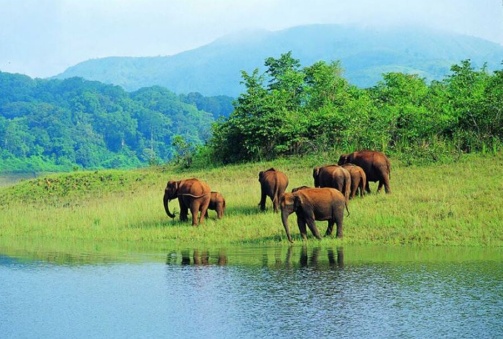
Day 20 - Thekkady-Alleppy (156 Km, 4 Hours 20 Minutes)
After breakfast, drive to Alleppy.
Arrive in Alleppy and transfer to hosueboat, rest of the day dedicated to relaxation.
Overnight stay in Houseboat with full board
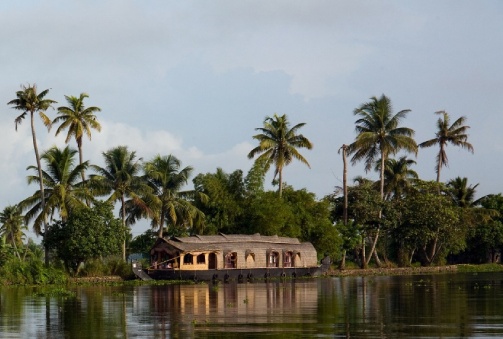
Day 21 - Alleppey - Kochi- (53 Km. 1 Hour 20 Minutes)
After breakfast, drive to Kochi.
Upon arrival, transfer to the hotel after a bit of relaxation, proceed for the boat trip to Marine drive.
Then visit Mattachency area, Chinese net, Dutch palace, Local market at Jews street, Synagogue.
Dutch Palace - Although the Dutch Palace was named so, it was the Portuguese who built it. What the Dutch did was only a cosmetic restoration and repair. During the early decades of the 16th century, the Portuguese had plundered many temples in Kochi.
Mattancherry area - It has people of different languages and ethnic identities. Churches, agraharams, mosques and a synagogue coexist in the area, along with colonial-era buildings, testifying to a vibrant past and harmonious present.
Chinese nets - Chinese nets made of teak wood and bamboo poles, work according to the principle of balance. Each structure, about 10 m high, is fixed on the beach and has a cantilever with an attached net that extends over a surface of about 20 meters.
Jew Street - You can choose from curios, antique tableware, carved wooden furniture, bronze and brass sculptures, remnants of traditional houses and jewelry. The antique dealers love to chat and keep you informed about the origins of the items and their shops. Their lives are colorful reminders of a once strong community whose numbers have decreased considerably over the years.
The Synagogue - T he Paradesi Synagogue, in a corner of Jew Town, is over a hundred years old and houses many rare antiques. The synagogue, which woos many visitors, adds to the quaint charm of Mattancherry.
Overnight stay in Kochi.

Day 22 - Kochi-Next DestinationTransfer to Kochi airport.
Ciao India Tours wishes you a happy journey.
Inclusions:
- 21 nights’ accommodation in 3 star/Heritage hotels with breakfast, including all existing taxes.
- All transfers from the airport to the hotel and vice versa.
- Meet and assist upon arrival/departure by our representative at the airport.
- Transfers, sightseeing, excursions as per air-conditioned program with average car.
- The car available as of March 5, 2023 in Bangalore.
- Full board in Alleppy on Houseboat.
- One bottle of water per person per day.
- All taxes included.
Exclusions:
- Visa, International flight, Health insurance, cancellation of flights, trains, Tips, Tour guide, Monument tickets, Activities, Personal expenses, Camera etc.
- Everything that is not included in the inclusions
